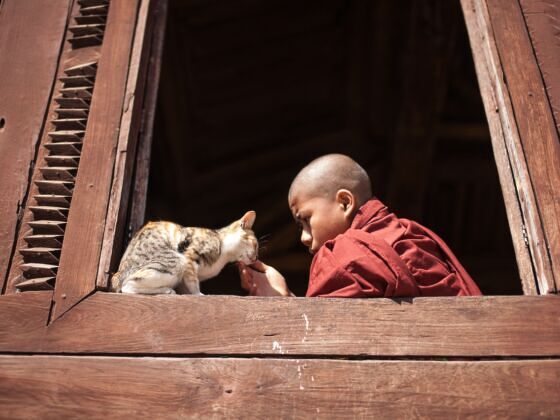Americans are obsessed with the notion of control. The control is just an illusion. ~ Lee Barnes, writer
BEAN, THE 10-MONTH OLD gray tabby, is possessed to leap up on the old dresser that serves as the center for my faith in what little I know of Tibetan Buddhism, and all I am learning about the nature of impermanence — a knowledge both unwelcome and irresistible. The dresser top is, more accurately, an altar, a flat-topped block used as the focus for a religious ritual, esp. for making sacrifices or offerings to a deity, my dictionary says.
